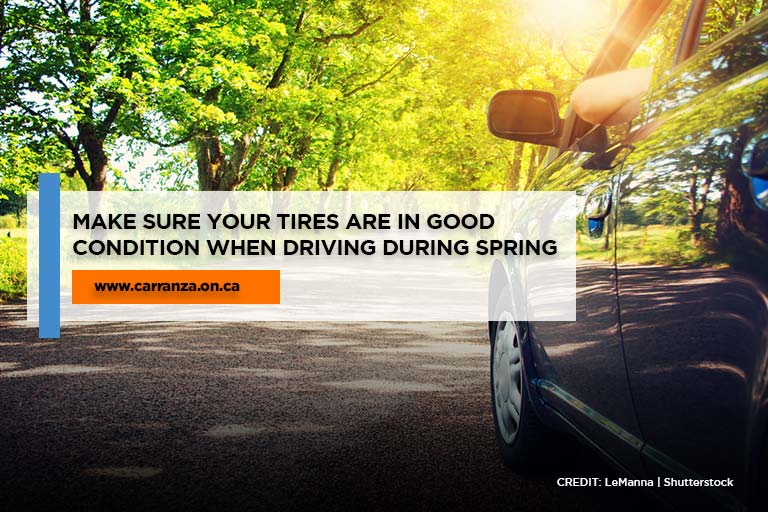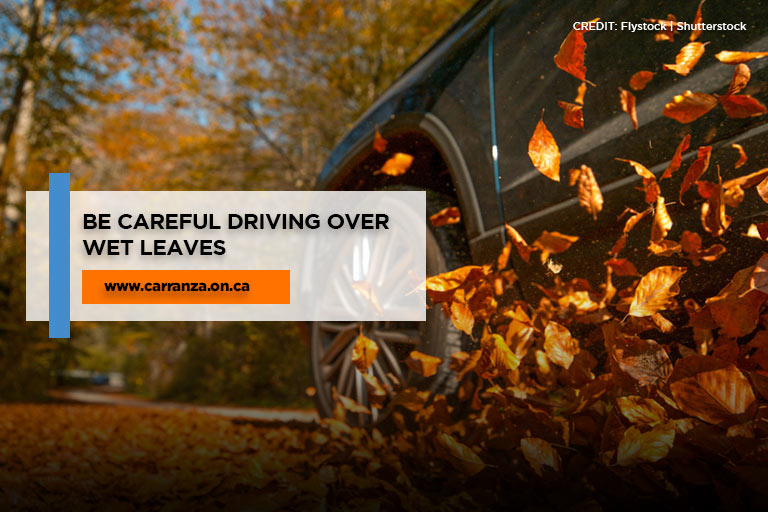Following road signs and speed limits, along with wearing seatbelts are important factors for driving safely. However, as the season changes, it is crucial to be prepared at all times to stay safe on the road all year long, as well as prevent any unexpected visits to a repair shop.
As a vehicle owner, it is vital to understand that each season has its unique set of challenges. It could be a blown-out tire on a scourging summer day or a dead battery on a freezing cold day. In addition to regular vehicle maintenance, being aware of the different seasonal conditions and hazards helps keep you, your vehicle, and pedestrians safe at all times.
Safe Driving Tips for Spring

Although the spring season is known for longer days and beautiful blooms, it brings various driving hazards that can put you at risk of accident or injury. Make sure to never let your guard down, especially when the icy-slick roads begin to melt.
Here are some safe driving tips to ensure a fun and safe ride in spring:
Rainwater causes the tire to hydroplane and lose contact with the road. This is equally dangerous when driving on an icy road. Additionally, oil on the road can mix with rainwater, making the surface slippery and unsafe. Driving in the middle lanes helps you avoid pools of rainwater on the outside of the road.
Worn treads have lesser traction on the road surface, which increase the risk of sliding. Use a tire tread depth gauge to check the depth of the tire tread. The measure of a good tire depth is 6/32 inch or deeper. If the depth is 4/32 inch, get a new one to replace it.
Ice, snow, and salt can damage wipers. Replace old wiper blades to ensure they are in good condition. Also, cleaning the windshield with a good window washer helps boost the performance of the wiper during a heavy downpour. While you are at it, also inspect the windshield fluid.
In some instances, avoiding potholes is not always an option. When you see one ahead and can’t avoid it, simply reduce your speed and right before driving over the pothole, gently release your brakes.
Safe Driving Tips for Summer

Driving on a hot, scourging summer day can present significant challenges and risks to the health and safety of drivers, passengers, and pedestrians alike.
Extreme summer heat can cause car engines to overheat, especially in standstill traffic. That is why it is important to check the level of coolant before hitting the road. Make sure the coolant is always topped up.
Tire blowouts are a common problem during the summer season. Damaged tires that are under-inflated are more likely to blow out in higher temperatures. Make sure your tire pressure is at the optimum level before setting off.
The increased amount of sun glare from the road and other vehicles can make driving hard, especially in the summer. Make sure to invest in good-quality polarized sunglasses to protect your eyes from fatigue and reduce glare.
Fall Driving Safety Tips

The canopies of changing leaves, pumpkin farm visits, and fun hayrides make fall a season of fun and adventure. Like other seasons, fall also presents seasonal driving challenges and dangers to drivers.
Colourful leaves may be a sight to behold, but they can pose a danger on the road, especially when wet. Wet leaves are not only slippery but also hide potholes, traffic lines, and other pavement markings. Always drive slowly and carefully, and make sure to keep a safe following distance.
Several types of weather can happen in one day during the fall season. Before hitting the road, be sure to check the daily weather forecast so you know what to expect and be prepared for. You may also want to monitor the weather so you can change your regular tires to winter tires when the time is right. However, you shouldn’t switch too early since this can wear down your tires.
Days are shorter and nights are longer in the fall, which is why you can still see children outside playing in the early darkness. You can also see people jogging or walking their dogs. The fading light of dusk makes it harder to look out for children and pedestrians.
-
Always be mindful of children at bus stops early in the morning and in the afternoon.
-
Drive cautiously and watch out for children wearing dark costumes on Halloween while trick or treating.
-
Practice defensive driving.
Make sure to check the windshield every morning before driving as the cold nighttime temperature can cause frost on windshields. Also, be cautious when you approach bridges and overpasses as they are more susceptible to collecting frost on their surfaces.
Animals, particularly deer, tend to be more active in the fall. Make sure to drive slowly and be extra attentive on the road when you see deer crossing signs. Slow down and beep your horn when you encounter a deer on the road. Avoid swerving into the other lane to prevent a collision.
Winter Driving Tips
No matter how long you have been driving, the winter season commands a healthy dose of caution and respect. The freezing cold weather requires unique winter driving tips for drivers in Canada, from best practices to preparing your vehicle for winter to helping you stay safe during your trips.
Make sure your vehicle is ready if you will be driving in the snow. Measure the depth of the tire tread and replace it with a new set if the tread depth is too low. Have snow tires ready if your location requires them. Inspect the levels of your battery, antifreeze, and washer fluid and make sure to replenish them if the level is too low. Also, keep your gas tank more than half full before driving in the freezing cold weather.
When you are driving on icy roads, take things slowly and easily. Making quick and sudden movements can cause your vehicle to slide and can cause a loss of control. Gradually increase your speed to gain traction and slow down when changing lanes, turning, and pulling out.
Also, be mindful of the speed of the other vehicles. Driving too slow can be as dangerous as going too fast. To ensure safety on the road, drive at a speed at which you feel comfortable and in control, while obeying speed limits.
These seasonal driving tips can help prevent potential car accidents and related fatalities. Motor vehicle accidents can result in devastating orthopaedic injuries.
If you are seriously injured due to another person's negligence, seek immediate medical treatment and consult a personal injury lawyer in Hamilton to learn what steps you need to take if you are caught in a car accident. Call Carranza LLP at 416-633-1065 and let us help you obtain fair compensation for your injuries.